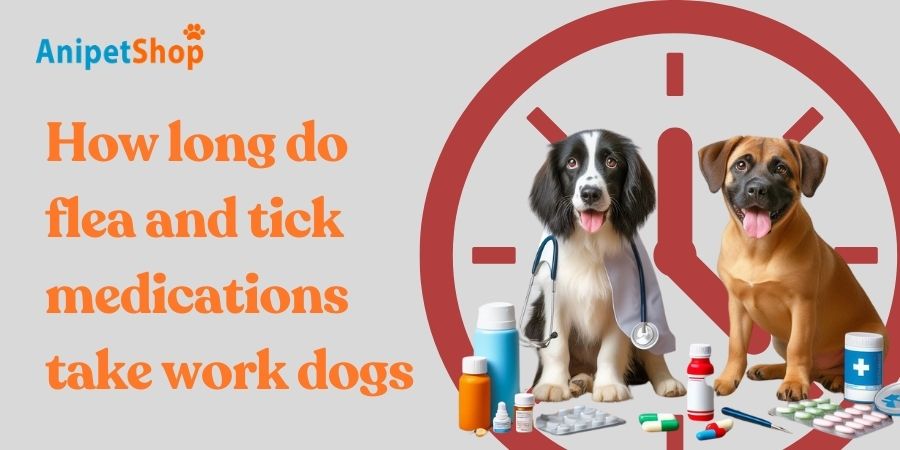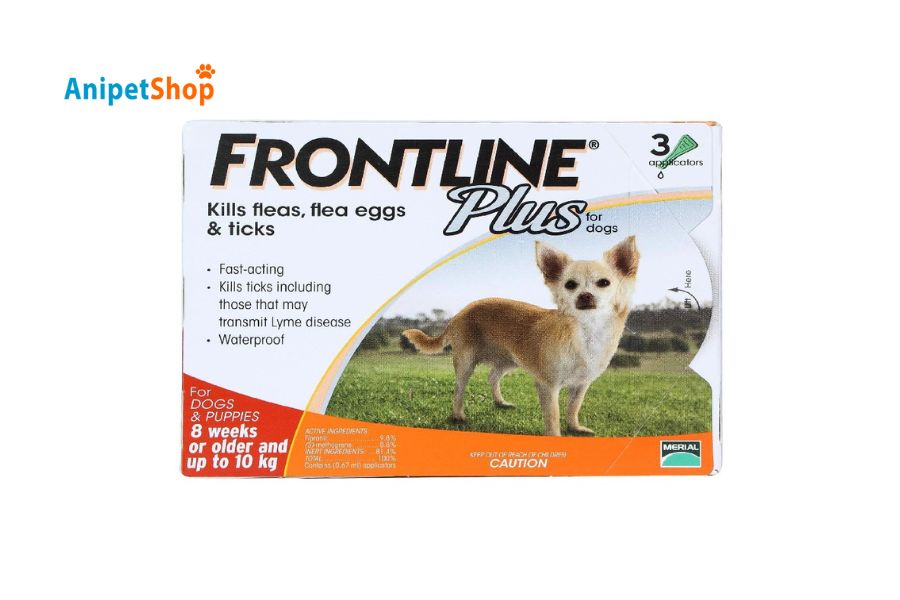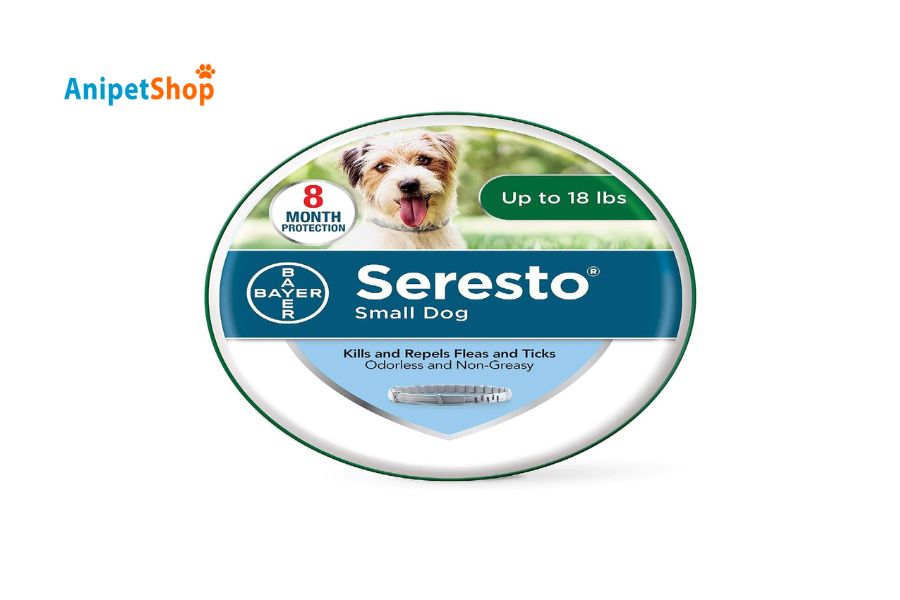Flea & Tick Meds: How Long Do They Take to Work on Dogs?
Fleas and ticks can cause your dog significant discomfort with intense itching and skin inflammation. These parasites can also transmit severe diseases such as anemia and Lyme disease. Therefore, regular flea and tick medication is vital for keeping your dog comfortable and protecting them from illness. So how long do flea and tick medications take to work on dogs?

Overview of Flea and Tick Medications: How Quickly Do Different Medications Work?
Topical Flea and Tick Preventative Medications
Topical flea and tick medications are liquids applied directly to your dog’s skin at the nape of the neck. They work quickly and kill fleas and ticks within hours of application. While fleas and ticks might die in 12 – 48 hours, full protection for your dog’s entire body takes a few days as the medication distributes throughout their fur and skin.

Oral Medications
Oral flea and tick medications are tablets that your dog can chew and swallow. Once your dog ingests, the medications enter its bloodstream and tissues. When a flea or tick bites your dog, they ingest a small amount of the medication, which kills their nervous system and leads to death within 12 – 48 hours. These products have rapid protection that often works in about 24 hours. The duration of this protection depends on the distinct medication, with some lasting a month and others lasting for several weeks or months.

Flea and Tick Preventative Medication Collars
Flea and tick collars contain insecticides that are slowly released for long-term protection. These spread continuously in a low-level medication zone around your dog’s fur, protecting it for up to 8 months. Some collar products may also repel those parasites with additional ingredients, preventing them from biting your dog.

Sprays and Shampoos
Flea and tick sprays and shampoos offer a fast-acting way of directly killing these parasites when they bite your dog. Upon application, the medications also provide an immediate knockdown effect. However, this protection is short-lived so you need to reapply frequently to maintain effectiveness.

Here is a detailed comparison of each medication that you can have a look at:
| Medication Type | Description | Onset of Action | Peak Effectiveness | Protection Duration |
| Topical (spot-on) | Applied to the skin, spread through oils | Within hours | Several days | Up to 1-month |
| Oral | Kills fleas/ticks when the dog bites | Within hours | Varies | Monthly, quarterly, etc. |
| Collar | Slow-release mechanism for long-term protection, may also repel pests | Several days | Full effectiveness within a week | Up to 8 months |
| Sprays and Shampoos | Immediate knockdown effect upon application | Short-term | Requires frequent reapplication | Various brands |
Signs Flea and Tick Medication Is Working on Your Dog
According to Stepanie Howe, here are signs after applying flea and tick medications to your dog:
-
- Expect dead fleas within 24 hours: This is a sign the medication is working.
- Itching may take a few days to subside: Be patient, as full relief takes time.
- Severe infestations require multiple treatments: Due to the flea’s life cycle, ongoing medication over several months may be necessary.
Regarding ticks, they are hard parasites that you need to notice some following points:
-
- Expect a longer wait time for results: Ticks are more resistant than fleas, so it takes closer to 24-48 hours for medication to kill them.
- Dead ticks may not fall off automatically: See a vet for safe removal, ensuring no parts are left behind.
- Consider switching medications: If you see more ticks after applying preventative, consult your vet for a different option.
Flea and tick medications work effectively but with varying timelines. Understanding these timelines helps monitor effectiveness and determine if adjustments are needed.
Factors Influencing Effectiveness
Here are some variable factors impacting the effectiveness of flea and tick preventative medications:
-
- Environment: A high-humidity atmosphere with frequent flea and tick infestations can limit the medication’s efficacy. This allows more fleas and ticks to survive longer in the environment, increasing the chance of re-infestation on your dog.
A humid environment can increase fleas and ticks
- Environment: A high-humidity atmosphere with frequent flea and tick infestations can limit the medication’s efficacy. This allows more fleas and ticks to survive longer in the environment, increasing the chance of re-infestation on your dog.
-
- Dog’s lifestyle: Swimming and bathing more often can wash away the medication, which can shorten its protection period. Discuss more with your veterinarian about reapplication guidelines after having baths or swimming.
Bathing dogs may reduce the protection of medication
- Dog’s lifestyle: Swimming and bathing more often can wash away the medication, which can shorten its protection period. Discuss more with your veterinarian about reapplication guidelines after having baths or swimming.
-
- Infestation severity: Severe flea and tick infestations may require more medication and environmental treatment to address completely. Therefore, medication may take longer to work due to serious infestation.
A dog with severe infestation
- Infestation severity: Severe flea and tick infestations may require more medication and environmental treatment to address completely. Therefore, medication may take longer to work due to serious infestation.
-
- Dog’s health and coat type: If your dog has problems relating to health conditions or wears a long thick coat, the medication can find it hard to reach all the dog’s skin, potentially delaying its maximum effect.
Dog coat types can impact the medication’s effectiveness
- Dog’s health and coat type: If your dog has problems relating to health conditions or wears a long thick coat, the medication can find it hard to reach all the dog’s skin, potentially delaying its maximum effect.
Preventative Measures Beyond Medication
Fleas and ticks are dangerous parasites so you must do more than just use medications for your pets to eliminate them. Here are the things you need to do:
-
- Have treatment for all your pets: Ensure all pets in your house such as cats, dogs, and rabbits are protected by flea and tick medications.
- Vacuum daily: Do household chores including vacuuming frequently can remove flea eggs and larvae, even on hardwood or tile flooring. Ensure to eliminate the vacuum bag and empty the canister right away after use.
- Do laundry: Use hot water to clean your bed weekly.
- Bath your dog weekly: For severe infestation, weekly baths can help remove dead fleas from your dog.
- Keep your yard tidy: Fleas and ticks enjoy shady and overgrown areas so maintaining a distance between your house and wild spaces can prevent these parasites.
- Hire a treatment service: Consider inviting a professional agency to spray your house and yard, ensuring it is a pet-safe treatment.
- Consult with your vet about insecticides: Ask your vet about pet-friendly sprays, bug bombs, or powders that are useful for home safety. Remember, careful instruction following is key!
Conclusion
Hopefully, the article has explained how long flea and tick medications take to work on dogs. Both topical and oral medications can kill fleas and ticks within hours and protect within a few days. While collards offer long-term defense (up to 8 months) for dogs, sprays, and shampoos deliver a fast-acting outcome but short-lived protection. If you have any concerns or additional questions, consult carefully with your veterinarian.
Lily Watson is an author specializing in veterinary care in Australia. With a profound passion for animal welfare and a solid foundation in veterinary science, Lily has dedicated herself to disseminating valuable knowledge and information for both pet owners and professionals in this field.





